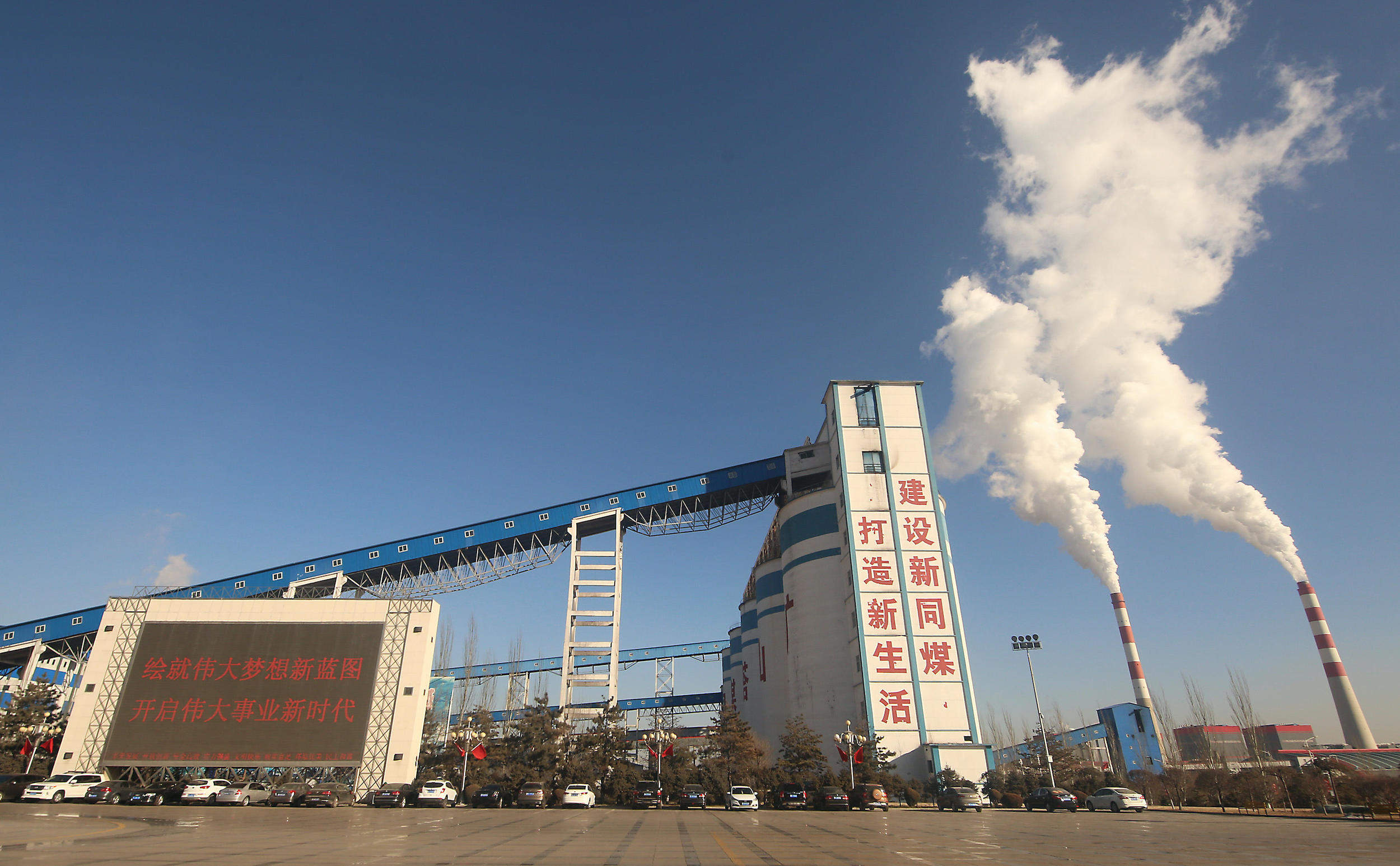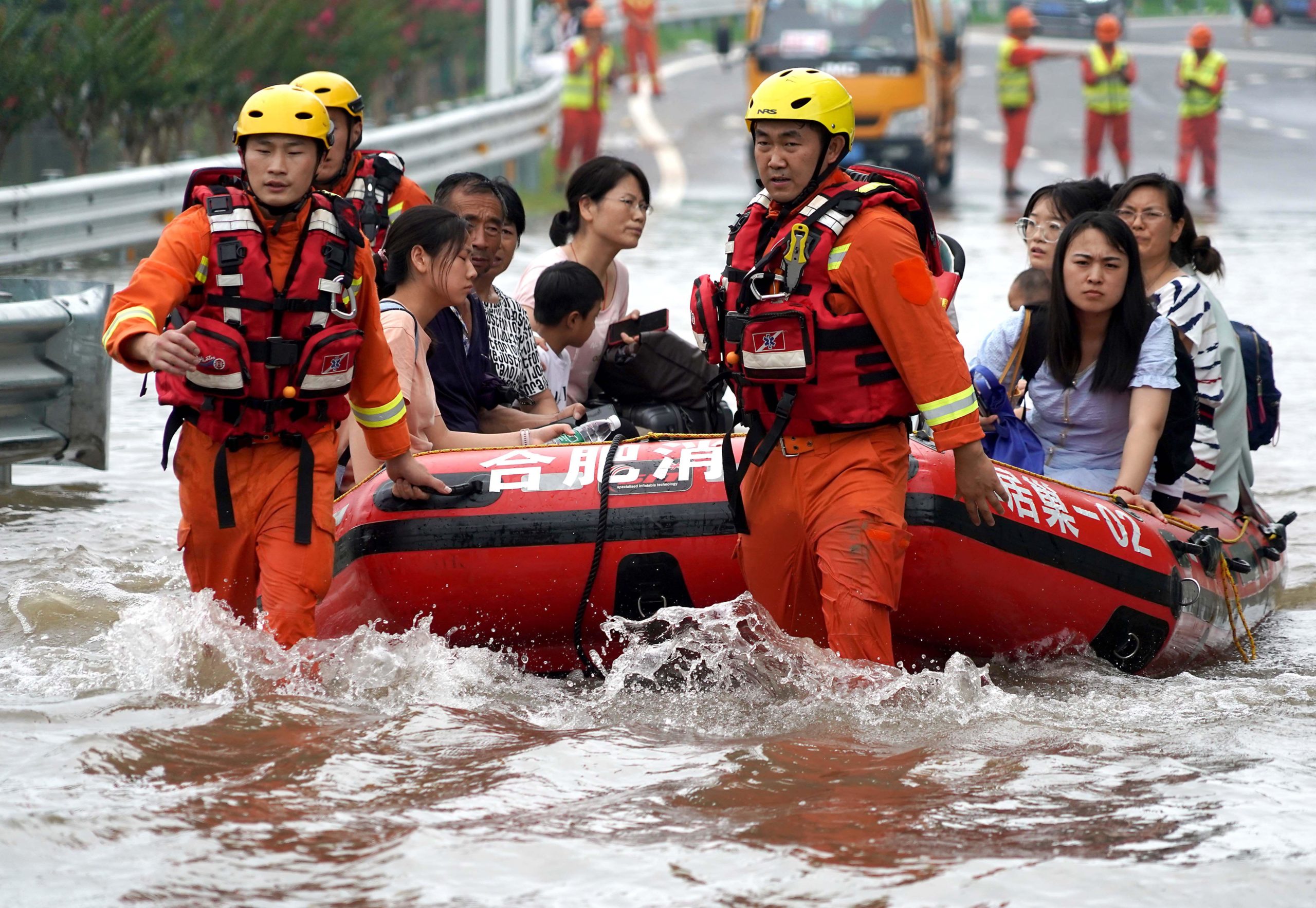National climate commitments to 2030 are putting the world on track for a temperature increase of 2.7C by the end of the century.
The world has just eight years to almost halve greenhouse gas emissions in order to limit global warming to 1.5C above pre-industrial levels, according to a new report by the United Nations Environment Programme (UNEP).
The latest UNEP Emissions Gap Report has found that new and updated emissions commitments made by countries, known as nationally determined contributions (NDCs), only reduce predicted 2030 emissions by 7.5%. A drop of 30% is needed to stay on the “least-cost pathway” for 2C, and 55% is needed to meet a temperature limit of 1.5C. (The least-cost pathway uses the cheapest combination of options to mitigate climate change.)
The report found the latest climate promises for 2030 put the world on track for a temperature rise by the end of this century of at least 2.7C from the pre-industrial baseline.
Commenting ahead of this year’s UN climate talks, known as COP26, the executive director of UNEP Inger Andersen has urged nations to take actions that include supporting developing countries to reduce emissions.
In a statement, she said: “We have eight years to almost halve greenhouse gas emissions: eight years to make the plans, put in place the policies, implement them and ultimately deliver the cuts. The clock is ticking loudly.”
Her comments come against a background of a post-pandemic emissions bounce-back. Atmospheric concentrations of all major greenhouse gases continued to rise in 2020 and carbon dioxide concentrations are currently higher than at any time in the last two million years.
COP26 is due to start on 31 October in the Scottish port city of Glasgow under the co-presidency of the United Kingdom and Italy.
Tom Evans, a policy advisor at the climate think tank E3G said the Emissions Gap report shows that urgent action is needed by governments to try and limit global warming. “The aim of COP26 is to ‘keep 1.5C alive’ but this report shows that window is closing fast,” he said.
“It yet again confirms what we already knew: there is a stark and worrying gap between where countries’ climate targets get us, and where we need to be to meet the Paris Agreement stretch goal of limiting warming to 1.5C.
“To keep that hope alive, leaders at Glasgow must agree a way forward to accelerate efforts to reduce emissions this decade – committing to enhance their 2030 climate targets by 2023 at the latest – or else a 1.5C world may slip out of reach.”
Committing to net zero
The 2030 pledges don’t tell the whole story, said Taryn Fransen, senior fellow with WRI’s climate program and lead author on the report. “If we factor in net zero pledges, we could see warming held to around 2.2C, which is a lot better than the more than three degrees of warming we were facing before Paris.”
UNEP described the announcement of long-term net zero emissions pledges by 49 countries and the EU, covering more than half of global emissions, as a “positive development”, but warned that the pledges include large ambiguities. Since that announcement, Saudi Arabia has also committed to net zero.
Thirteen G20 members covering just over half of global domestic greenhouse gas emissions have currently pledged a net zero target, of which six are in law, two are in policy documents and five are government announcements. All are for the year 2050, except for China’s 2060 target, Saudi Arabia’s for the same year and Germany’s for 2045.

The UN is concerned that some of these plans lack critical near-term targets and says that most existing targets are unclear or undecided on issues such as the inclusion of offsets and the inclusion of emissions from international aviation, shipping and exports. To take Saudi Arabia as an example, carbon emitted by other nations burning oil imported from the kingdom will not be counted.
“The world has to wake up to the imminent peril we face as a species,” Andersen said. “Nations need to put in place the policies to meet their new commitments, and start implementing them within months.
“They need to make their net zero pledges more concrete, ensuring these commitments are included in NDCs, and action brought forward.
“It is also essential to deliver financial and technological support to developing nations – so that they can both adapt to the impacts of climate change already here and set out on a low-emissions growth path.”
The Emissions Gap report has alarmed experts and increased concerns that the developing world will be the hardest hit if emissions aren’t reined in fast enough.
Andrew Norton, the director of the London-based think tank the International Institute for Environment and Development (IIED) said: “The latest Emissions Gap report makes for grim reading and needs to focus the attention of world leaders ahead of COP26 next week.
“Every 0.1C of warming means more upheaval, more disaster, more lives lost and it’s poor and vulnerable communities that are being hit first and worst.
“Over the last 50 years, more than two-thirds of worldwide deaths caused by climate-related disasters were in the least developed countries.”
G20 failing to lead
According to the Emissions Gap report, as a group, G20 members are not on track to achieve either their original or new 2030 pledges.
Currently, even though ten G20 members are expected to achieve their original unconditional NDC targets under current policies, members as a whole are projected to fall short of achieving their unconditional NDCs by 1.1 gigatonnes of carbon dioxide equivalent (GtCO2e) annually.
The countries that are expected to hit their unconditional targets are Argentina, China, the EU, India, Japan, the Russian Federation, Saudi Arabia, South Africa, Turkey and the United Kingdom.
According to the UNEP analysis, the nations that require stronger policies to achieve their unconditional targets include Australia, Brazil, Canada, Mexico, the Republic of Korea and the US.
Some of the wealthy countries that are already hitting their unconditional targets should be doing far more to close the global emissions gap according to IIED.
“The fate of the planet lies in the hands of the biggest economies and the major polluters,” said Norton, before listing G20 countries that have failed to commit to net zero – Australia, India, Indonesia, Mexico, Russia, South Africa and Turkey.
“China, India, Saudi Arabia, Turkey and South Africa have not submitted updated national plans mitigating climate change. These countries can avert a great deal of suffering and loss by ratcheting up their ambition to cut emissions at COP26.”

Evans agrees that there is an urgent need for new 2030 climate commitments from all countries that have yet to do so.
“The G20 group of major emitters all promised to enhance their targets at July’s climate ministerial. China, India and Saudi Arabia must now fulfil this promise,” he said.
Earlier this month, leaked documents seen by the BBC exacerbated concerns that some of the world’s biggest polluters had taken actions to try and undermine global efforts to reduce emissions.
The documents showed that Saudi Arabia, Japan and Australia were among countries that had lobbied the UN to play down the need to move rapidly away from fossil fuels in a UN Intergovernmental Panel on Climate Change (IPCC) assessment report.
The IPCC is the UN body tasked with evaluating the science of climate change and its reports are used by governments to decide what action is needed to tackle climate change.
Green recovery missed
The UNEP report has revealed that most nations missed the opportunity to use Covid-19 fiscal rescue and recovery spending to stimulate the economy while fostering a low-carbon transformation.
According to it, approximately US$16.7 trillion was spent to May 2021 on Covid-19-related rescue and recovery packages, excluding unallocated European Union funds. Out of this, $2.25 trillion is considered recovery spending, and only $390-440bn of the recovery spending is likely to reduce greenhouse gas emissions.
France, Germany, Canada, Finland, Norway and Denmark can be classified as “leaders” on green recovery, according to The Global Recovery Observatory. It found that green spending as a share of recovery spending ranged from 39% to 75% for these countries. Sweden, Spain and the UK also rank highly, according to Vivid Economics’ Greenness of Stimulus Index.
The UN says that, without a substantial increase in foreign aid, the difference in spending between advanced economies and emerging markets and developing economies will exacerbate gaps in development and restrict progress against climate change.
It believes that if existing trends continue, emerging markets and developing economies are likely to become the world’s top greenhouse gas emitters at the same time as disproportionately suffering the burden of climate change, which has historically been caused primarily by high-income nations.
Rapid action on methane
Methane emissions are an area of hope, according to UNEP. The report states that a reduction in methane from the fossil fuel, waste and agriculture sectors could potentially contribute significantly to closing the emissions gap and reducing warming in the short term.
Current NDCs cover only about one-third of the methane reduction required to be consistent with a 2C temperature goal, and only about 23% of what is needed for the 1.5C goal.
The UN says there are “excellent opportunities” to include additional methane reduction measures in NDCs, as several countries are already demonstrating through actions such as upstream leak detection and repair in oil and gas systems, elimination of gas flaring, energy recovery from landfill gas, and reducing food waste.
According to the report, available net-negative or low-cost technical mitigation measures alone could reduce anthropogenic methane emissions by approximately 20% by 2030.
Though the publication of the UNEP Emissions Gap report highlights the inadequacy of existing national climate pledges, many national leaders are under significant pressure to prioritise short-term economic performance over environmental issues.
How seriously global leaders heed the call to deliver rapid, large-scale cuts in emissions will become clear once the climate conference gets underway at the end of the month.
“We are still waiting to see what major emitters like China and India will bring to the table, but it’s already clear that leaders will arrive in Glasgow still facing a sizable emissions gap. A key measure of COP26’s success will be whether they choose to confront this head-on – for example, by calling on major emitters to re-up their pledges before 2025,” said Fransen.














Đăng nhận xét